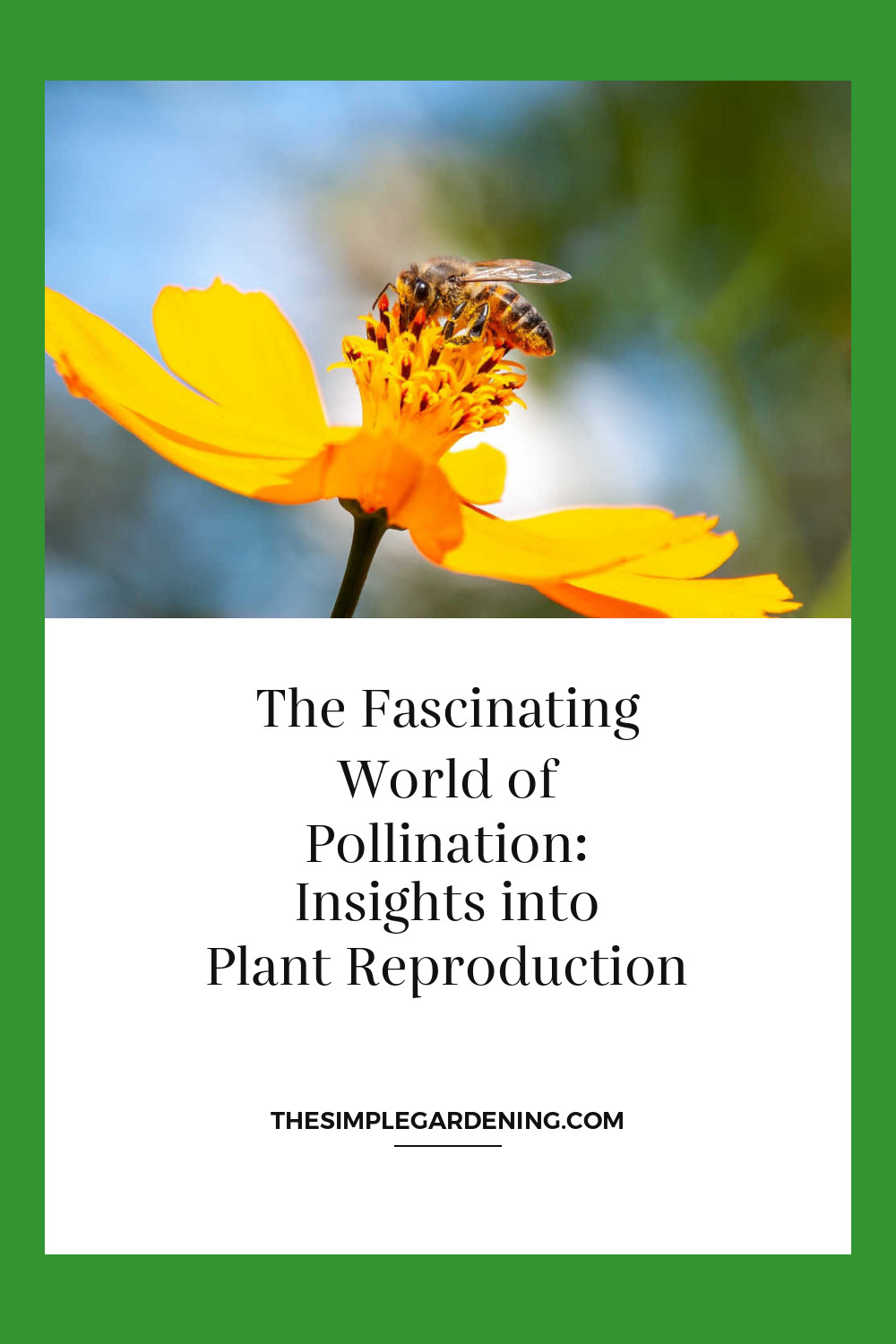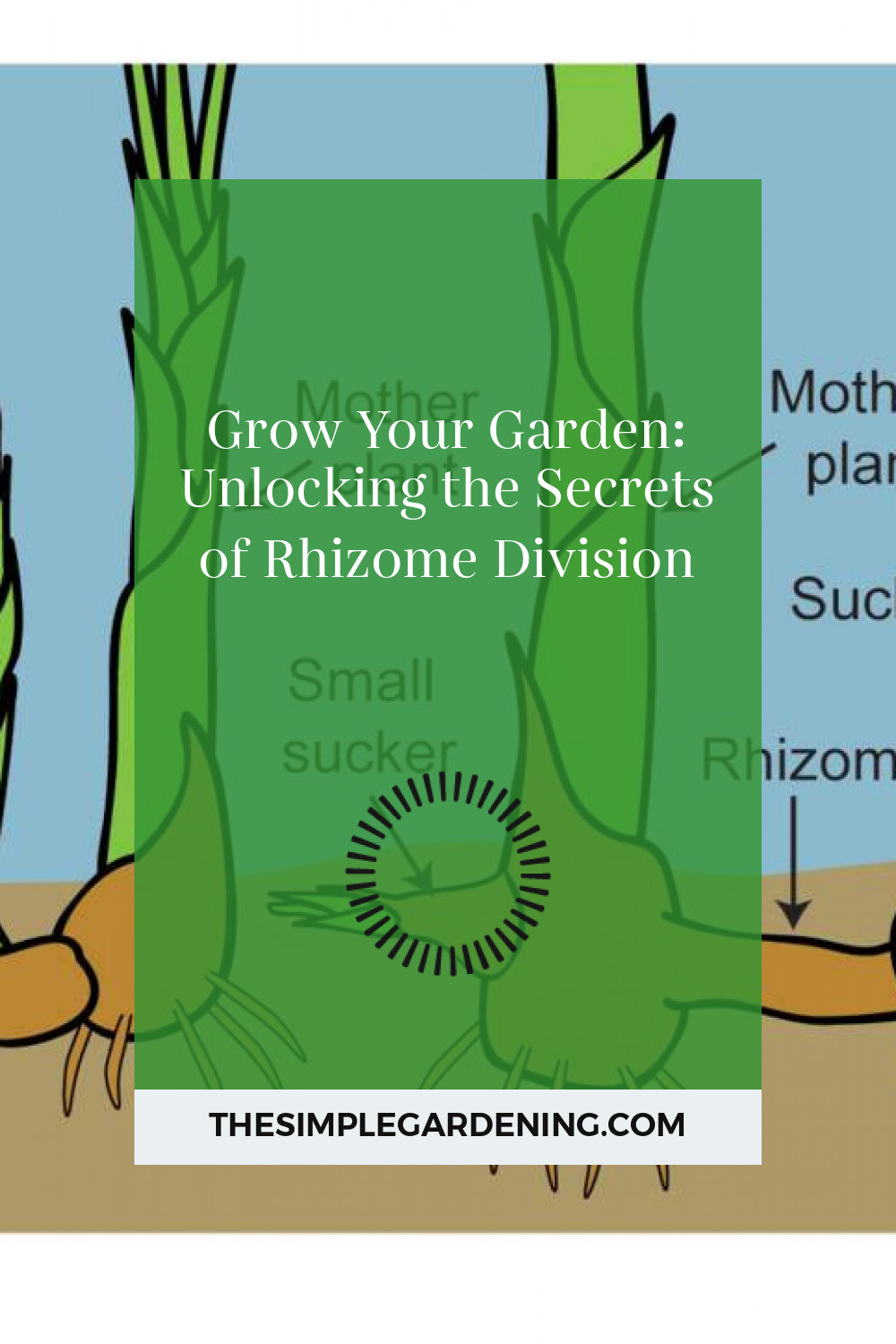Pollination is the unsung hero of the plant world, facilitating the reproduction of countless species and sustaining ecosystems worldwide. In this article, we’ll delve into the intricate world of pollination, exploring its mechanisms, significance, and implications for agriculture and the environment.
| Section | Content |
|---|---|
| Purpose | To introduce the importance of pollination in plant reproduction and set the stage for subsequent discussions. |
| Audience | Gardening enthusiasts, botany aficionados, and anyone curious about the wonders of plant life. |
Why Pollination Matters
Pollination isn’t just a biological process; it’s the foundation of life on Earth. Without it, many plant species would cease to exist, disrupting entire ecosystems and jeopardizing food security for humans and wildlife alike.
The Pollination Puzzle
Imagine a world without bees buzzing from flower to flower or the gentle breeze carrying pollen through the air. Pollination connects plants, animals, and humans in a delicate dance of reproduction and sustenance.
Defining Pollen Transfer and Its Significance in Plant Reproduction
At its core, pollination is the transfer of pollen grains from the male reproductive organs to the female reproductive organs of plants, leading to fertilization and seed production. This process can occur through various mechanisms, each with its own unique adaptations and ecological implications.
| Term | Definition |
|---|---|
| Pollination | The transfer of pollen from the male reproductive organs (anthers) to the female reproductive organs (stigma) of flowers, facilitating fertilization and seed production. |
Significance of Pollination
Pollination is essential for the reproduction of flowering plants, including many crops that humans rely on for food, fiber, and medicine. By enabling fertilization and seed formation, pollination contributes to genetic diversity, ecosystem stability, and agricultural productivity.
Ecological Importance
In natural ecosystems, pollination sustains biodiversity by supporting the reproduction of flowering plants, which serve as food sources for various animals and insects. Additionally, pollination plays a crucial role in the maintenance of habitats and the functioning of ecosystems.
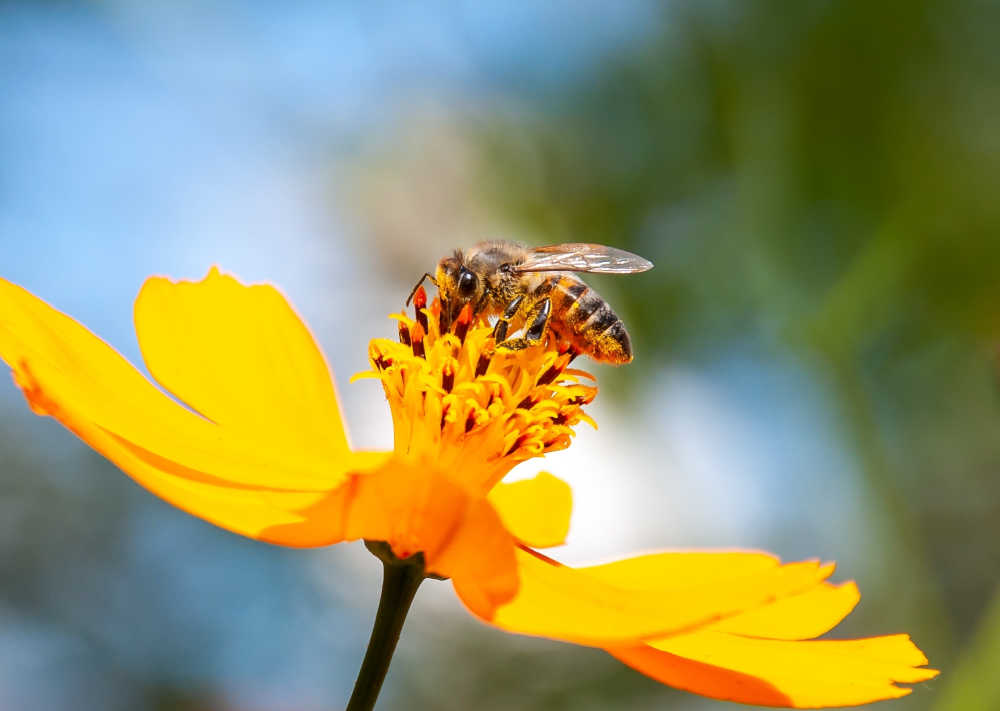
Source Image: bestflowersite.co
Importance of Understanding Pollination for Agricultural and Ecological Purposes
In the realm of agriculture and ecology, a deeper understanding of pollination is invaluable for optimizing crop production, conserving biodiversity, and mitigating environmental challenges. By unraveling the mysteries of pollination, researchers and practitioners can harness its potential to address global issues such as food security, habitat loss, and climate change.
| Importance | Explanation |
|---|---|
| Agricultural | Pollination is essential for the production of many crops, including fruits, vegetables, nuts, and oilseeds. Understanding pollination dynamics can help farmers maximize yields and improve crop quality. |
| Ecological | Pollination contributes to the stability and resilience of ecosystems by facilitating the reproduction of flowering plants, which form the basis of terrestrial food webs and provide habitat for numerous species. |
Optimizing Crop Yields
In agriculture, pollination directly impacts crop yields and quality. By identifying optimal pollination strategies for different crops, farmers can enhance productivity, reduce dependency on synthetic inputs, and promote sustainable agricultural practices.
Conserving Biodiversity
Beyond agriculture, pollination is essential for maintaining biodiversity and ecosystem services. By conserving pollinator populations and their habitats, conservationists can safeguard plant diversity, protect wildlife habitats, and promote ecosystem resilience in the face of environmental change.
Pollen Production
Pollen production is a complex biological process governed by intricate molecular mechanisms and environmental cues. Understanding the factors influencing pollen quantity and quality is crucial for predicting plant reproductive success and optimizing pollination outcomes.
| Factor | Influence |
|---|---|
| Environmental | Factors such as temperature, humidity, and light intensity can affect pollen production by influencing plant physiology and reproductive development. |
| Physiological | Genetic factors, hormonal regulation, and metabolic pathways play key roles in pollen development, maturation, and release, shaping the quantity and quality of pollen grains. |
Anatomy of Pollen Production
Pollen grains originate from the male reproductive organs of flowers, known as stamens. Within the stamen, specialized cells called microsporocytes undergo meiosis to produce haploid microspores, which develop into pollen grains through a series of morphological and biochemical changes.
Regulation of Pollen Development
Pollen production is tightly regulated by a complex network of genetic and environmental factors. Hormonal signals, transcriptional regulators, and epigenetic modifications orchestrate the expression of genes involved in pollen formation, ensuring temporal and spatial control of reproductive processes.
Environmental Influences
Environmental cues such as temperature, moisture, and light availability can influence pollen production by modulating plant growth, development, and metabolism. For example, heat stress or drought conditions may disrupt pollen development and reduce pollen viability, compromising reproductive success in plants.
Physiological Processes
At the physiological level, pollen production is governed by intricate biochemical pathways and cellular processes. Metabolic activities such as carbohydrate metabolism, lipid biosynthesis, and protein synthesis are essential for pollen development, germination, and tube growth.
.jpg)
Exploring the Anatomy and Physiology of Pollen Production in Plants
Pollen production is a fascinating biological process that involves intricate interactions between genetic, physiological, and environmental factors. In this section, we’ll explore the anatomy and physiology of pollen production in plants, shedding light on the mechanisms underlying this essential reproductive process.
| Aspect | Description |
|---|---|
| Anatomy | Pollen grains originate from the male reproductive organs of flowers, called stamens. Within the stamen, specialized structures known as microsporangia contain microspore mother cells (microsporocytes), which undergo meiosis to produce haploid microspores. |
| Physiology | The development of pollen grains is regulated by a complex interplay of genetic, hormonal, and environmental factors. Hormonal signals, transcriptional regulators, and metabolic pathways control the expression of genes involved in pollen formation, ensuring the proper development and maturation of pollen grains. |
Anatomy of Pollen Production
The process of pollen production begins within the stamen, the male reproductive organ of flowers. Each stamen typically consists of a filament, which supports the anther, the site of pollen production. Within the anther, specialized structures called microsporangia contain microspore mother cells, also known as microsporocytes.
Physiology of Pollen Development
Pollen development is a highly coordinated process that involves a series of morphological and biochemical changes. Upon meiosis, microsporocytes give rise to haploid microspores, which undergo further differentiation and maturation to become pollen grains. This process is governed by a complex network of genetic, hormonal, and environmental factors.
Factors Influencing Pollen Quantity and Quality
The quantity and quality of pollen produced by plants can vary widely depending on various genetic, physiological, and environmental factors. Understanding these factors is essential for predicting plant reproductive success, optimizing pollination outcomes, and mitigating potential challenges.
| Factor | Influence |
|---|---|
| Genetic | The genetic makeup of a plant determines its potential for pollen production and the quality of pollen grains it produces. |
| Environmental | Environmental factors such as temperature, humidity, soil nutrients, and light availability can influence pollen quantity and quality by affecting plant growth, development, and metabolism. |
Genetic Factors
Genetic variation among plant populations can significantly impact pollen production and quality. Plants with favorable genetic traits, such as high fertility and pollen viability, are more likely to produce abundant and viable pollen grains, enhancing their reproductive success. Plant breeding programs often aim to select and cultivate varieties with superior pollen characteristics to improve crop yields and quality.
Environmental Influences
Environmental conditions play a crucial role in shaping pollen production and quality. Temperature extremes, moisture levels, soil fertility, and light intensity can influence plant physiology and reproductive processes, ultimately affecting pollen development and viability. For example, optimal temperature ranges are essential for pollen germination and tube growth, while water availability is critical for maintaining turgor pressure and metabolic activities within pollen grains.
Physiological Processes
At the physiological level, pollen production is governed by complex biochemical pathways and cellular processes. Metabolic activities such as carbohydrate metabolism, lipid biosynthesis, and protein synthesis are essential for pollen development, maturation, and germination. Nutrient availability, hormonal signaling, and stress responses can modulate these metabolic processes, influencing pollen quantity and quality in plants.
Environmental Stress
Environmental stressors, such as drought, heat, and pollution, can negatively impact pollen production and quality. Stress-induced changes in plant physiology, metabolism, and gene expression may disrupt pollen development, reduce pollen viability, and impair fertilization success. In agricultural settings, mitigating environmental stressors through irrigation, soil management, and pest control measures can help maintain optimal pollination conditions and ensure crop productivity.
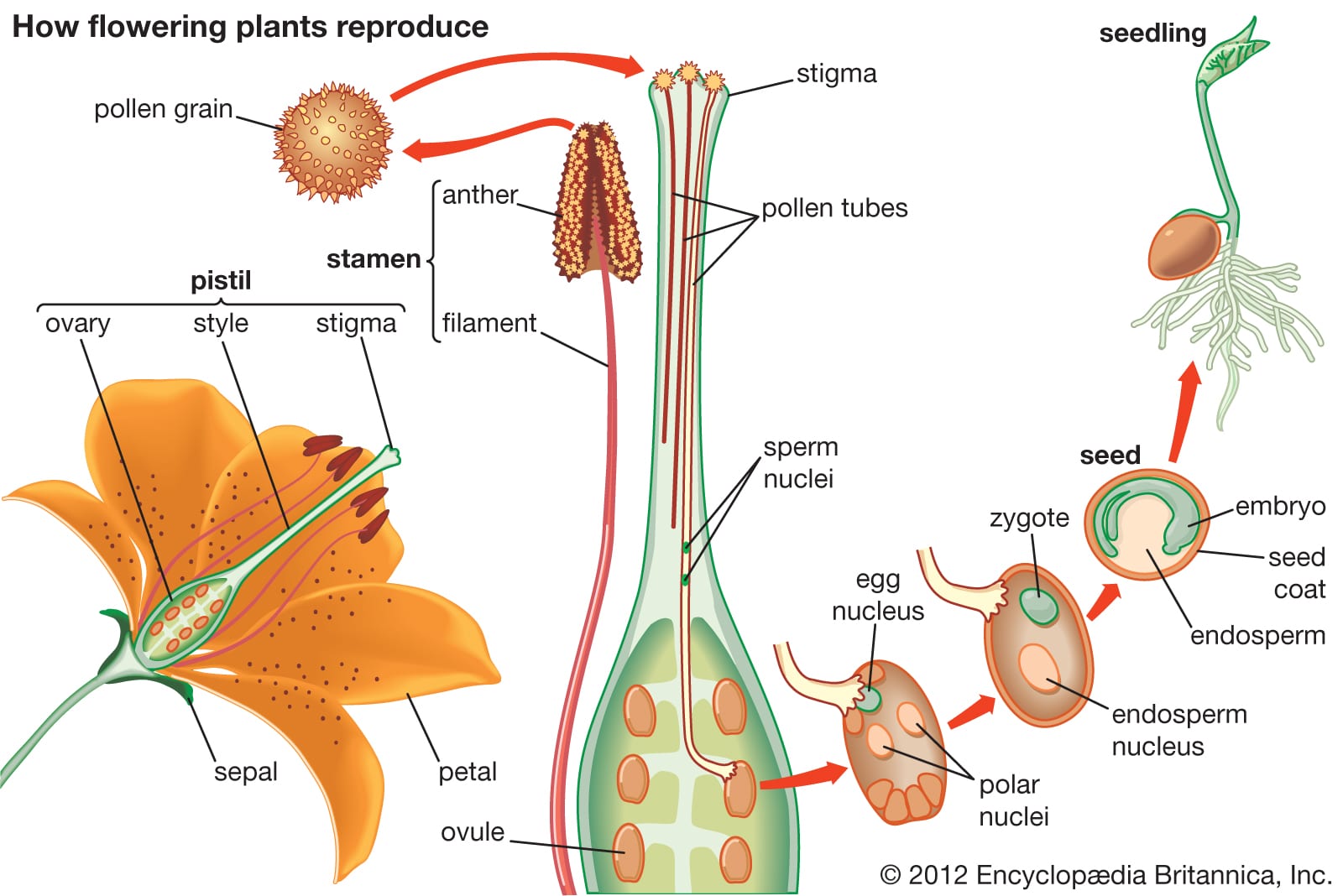
Source Image: ugaurbanag.com
Pollen Transfer
Pollen Grains
Pollen grains are the microscopic structures responsible for carrying male gametes (sperm cells) from one flower to another during pollination. These tiny particles exhibit remarkable diversity in size, shape, and surface characteristics, reflecting the evolutionary adaptations of plants to different pollination strategies and environments.
| Characteristic | Description |
|---|---|
| Structure | Pollen grains are typically composed of two layers: an outer exine layer and an inner intine layer. The exine layer, made of sporopollenin, provides structural support and protection, while the intine layer contains cellulose and pectin and is involved in pollen tube growth. |
| Morphology | Pollen grains exhibit diverse shapes and sizes, ranging from spherical to elongated, and from smooth to highly sculptured surfaces. These morphological variations reflect adaptations to different pollination mechanisms and environmental conditions. |
| Surface Features | The surface of pollen grains may be ornamented with various structures, such as spines, ridges, and pores, which play roles in pollen dispersal, adhesion, and recognition by pollinators. Surface features also influence pollen interactions with the environment and other floral parts. |
Structural Composition
Pollen grains are composed of two main layers: the outer exine layer and the inner intine layer. The exine layer, primarily made of sporopollenin, provides structural support and protection against environmental stressors, while the intine layer contains cellulose and pectin and is involved in pollen tube growth during fertilization.
Morphological Diversity
Pollen grains exhibit remarkable diversity in their shapes, sizes, and surface ornamentation. This diversity reflects the evolutionary adaptations of plants to different pollination strategies and ecological niches. For example, wind-pollinated plants often produce small, lightweight pollen grains with smooth surfaces, facilitating dispersal over long distances, while insect-pollinated plants may have larger, more elaborate pollen grains tailored to attract and adhere to specific pollinators.
Surface Features and Adaptations
The surface of pollen grains may feature various structures, including spines, ridges, pores, and sculptural elements, which serve functional roles in pollen dispersal, adhesion, and recognition. These surface features interact with environmental factors such as air currents, moisture, and pollinator behavior, influencing pollen transport and deposition on receptive stigma surfaces.
Functional Significance
The morphology and surface characteristics of pollen grains are intricately linked to their function in pollination and fertilization. By adapting to different pollination mechanisms and ecological conditions, plants optimize the efficiency of pollen transfer and increase the likelihood of successful fertilization, ultimately ensuring reproductive success and genetic diversity within populations.
Pollination Mechanisms
Pollination is accomplished through various mechanisms, each tailored to the specific ecological and reproductive needs of different plant species. From wind and water to animals such as insects, birds, and bats, these mechanisms represent evolutionary solutions to the challenges of transferring pollen from one flower to another. In this section, we’ll explore the diverse strategies employed by plants to achieve pollination and ensure reproductive success.
| Mechanism | Description |
|---|---|
| Wind Pollination | In wind-pollinated plants, pollen grains are lightweight and produced in large quantities to increase the chances of successful dispersal by air currents. These plants often lack showy flowers and rely on the wind to carry pollen from male to female reproductive organs. Wind-pollinated species are common in open habitats such as grasslands, deserts, and alpine regions. |
| Insect Pollination | Insect pollination involves the transfer of pollen by various insects, including bees, butterflies, moths, flies, and beetles. Plants attract insect pollinators through a combination of visual cues (e.g., flower color, shape, and pattern), scent (e.g., floral fragrances), and rewards (e.g., nectar and pollen). This mutualistic relationship benefits both plants and pollinators and has led to coevolutionary adaptations. |
| Bird and Bat Pollination | Bird and bat pollination is relatively rare but occurs in certain plant species adapted to attract avian or mammalian pollinators. Flowers pollinated by birds typically have tubular shapes, bright colors (e.g., red, orange), and copious nectar rewards, while bat-pollinated flowers are often large, white or pale-colored, and emit strong odors at night. These adaptations facilitate pollination by specific vertebrate pollinators. |
| Water Pollination | Water pollination, or hydrophily, occurs in aquatic or semiaquatic plants that release their pollen grains directly into the water, where they are transported to female reproductive organs by water currents. Submerged flowers may have reduced floral structures and lack showy features, relying on water movement for pollination. Water pollination is prevalent in aquatic habitats such as ponds, lakes, and wetlands. |
Wind Pollination
Plants adapted to wind pollination, known as anemophilous species, have evolved unique features to maximize pollen dispersal in open, windy environments. These plants typically produce large quantities of small, lightweight pollen grains that are easily carried by air currents over long distances. Wind-pollinated flowers often lack showy petals and nectar rewards, instead focusing on efficient pollen production and release.
| Characteristic | Description |
|---|---|
| Morphological | Wind-pollinated flowers tend to have inconspicuous floral structures, such as reduced or absent petals, and lack bright colors or strong fragrances. These features minimize attractants for pollinators and maximize efficiency in pollen dispersal. |
| Pollen Production | Anemophilous plants produce copious amounts of small, lightweight pollen grains that are easily carried by the wind. These pollen grains are typically smooth-surfaced and lack adhesive structures, allowing for efficient airborne transport. |
| Adaptations | Wind-pollinated species often exhibit adaptations to enhance pollen capture by neighboring flowers, such as clustered inflorescences or pendulous stamens that release pollen directly into the wind stream. These adaptations increase the likelihood of successful pollination in windy conditions. |
Insect Pollination
Insect pollination, or entomophily, is the most common form of pollination in flowering plants and involves a diverse array of insect pollinators, including bees, butterflies, moths, flies, and beetles. Plants attract insect pollinators through visual, olfactory, and tactile cues, such as flower color, shape, scent, and rewards. In return, pollinators receive nectar, pollen, or other resources as a food source.
| Insect Pollinators | Description |
|---|---|
| Bees | Bees are among the most important insect pollinators, responsible for pollinating a wide range of flowering plants, including many agricultural crops. Bees are attracted to flowers with bright colors (especially blue and yellow), a sweet scent, and ample nectar and pollen rewards. |
| Butterflies | Butterflies are known for their graceful flight and colorful wings, making them effective pollinators for flowers with long tubular shapes or landing platforms. Butterflies are attracted to flowers with bright colors (especially red and purple), a strong fragrance, and nectar-rich blooms. |
| Moths | Moths are nocturnal pollinators attracted to flowers with pale or white colors, a strong sweet scent, and nectar produced at night. Moths use their long proboscis to feed on floral nectar while inadvertently transferring pollen between flowers. |
| Flies | Flies are diverse pollinators found in various habitats, from forests to urban environments. Flies are attracted to flowers with foul or rotting odors, such as carrion flowers or dung flowers, which mimic their natural food sources. Flies transfer pollen while feeding on floral secretions or seeking shelter. |
| Beetles | Beetles are ancient pollinators that evolved alongside flowering plants and are attracted to a wide range of flower types, including those with simple or bowl-shaped structures. Beetles are often attracted to flowers with strong odors, such as spicy or fruity scents, and feed on floral tissues or pollen while pollinating. |
Co-evolutionary Relationships
The relationship between plants and their insect pollinators is a classic example of co-evolution, wherein both parties have evolved traits that benefit the other. Plants have developed floral characteristics and rewards that attract specific pollinators, while pollinators have evolved behaviors and morphological adaptations that enhance their efficiency in pollen collection and transfer.
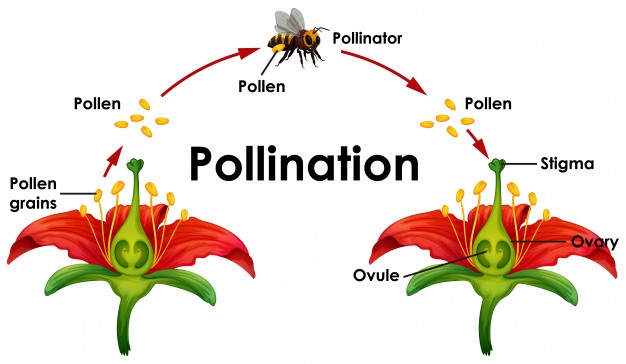
Source Image: www.ypsilibrary.org
Bird and Bat Pollination
While insects are the most common pollinators, certain plants have evolved to rely on birds and bats for pollination, a phenomenon known as ornithophily and chiropterophily, respectively. These specialized relationships have led to the evolution of unique floral adaptations and behaviors that facilitate pollination by avian and mammalian visitors.
| Pollinator | Description |
|---|---|
| Birds | Bird-pollinated flowers typically have tubular shapes and produce copious amounts of nectar to attract avian visitors. Flowers may also be brightly colored (especially red, orange, or yellow) to stand out against green foliage and appeal to bird visual preferences. Bird-pollinated plants often have sturdy, perched flowers that support the weight of visiting birds and facilitate efficient pollen transfer. |
| Bats | Bat-pollinated flowers are usually large, pale-colored, and emit strong, musky odors to attract nocturnal visitors. These flowers may have robust structures and open, bowl-shaped or pendulous forms to accommodate bat foraging behaviors. Bat-pollinated plants often produce copious amounts of nectar, which serves as an energy-rich reward for visiting bats. |
Bird Pollination
Bird-pollinated flowers are typically adapted to attract avian visitors through visual cues, such as bright colors and tubular shapes, as well as olfactory signals, such as strong fragrances. Nectar production is a key strategy for attracting birds, which rely on this energy-rich reward to fuel their high metabolic demands. Bird-pollinated plants often have sturdy, perched flowers that accommodate the weight of visiting birds and facilitate efficient pollen transfer.
Bat Pollination
Bat-pollinated flowers have evolved unique features to attract nocturnal visitors, including large, pale-colored blooms with strong, musky odors. These flowers may be bowl-shaped or pendulous, providing ample space for bat foraging behaviors. Nectar production is also prevalent in bat-pollinated plants, serving as a valuable energy source for visiting bats during their nightly forays. Bat-pollinated flowers often open at night to coincide with bat activity and maximize pollination success.
Mutualistic Relationships
The mutualistic relationships between plants and their bird or bat pollinators are characterized by reciprocal benefits for both parties. Plants receive efficient pollen transfer and reproductive success, while pollinators obtain essential resources, such as nectar, and potential mating opportunities. These co-evolved relationships highlight the remarkable diversity of pollination strategies in the natural world and underscore the importance of biodiversity conservation for maintaining ecosystem function and resilience.
Water Pollination
While less common than wind or insect pollination, water pollination, or hydrophily, is an important adaptation for plants inhabiting aquatic or semiaquatic habitats. Water-pollinated plants have evolved specialized mechanisms for releasing their pollen grains directly into the water, where they are transported to female reproductive organs by water currents. This unique pollination strategy is prevalent in aquatic ecosystems such as ponds, lakes, and wetlands.
| Adaptation | Description |
|---|---|
| Floral Structures | Water-pollinated flowers typically have reduced or absent floral structures, such as petals or sepals, to facilitate pollen release and dispersal in aquatic environments. Flowers may be submerged or emergent, depending on the plant species and habitat conditions. |
| Pollen Dispersal | Pollen grains of water-pollinated plants are released directly into the water, where they float or drift along water currents until they encounter female reproductive organs of neighboring flowers. This passive mode of dispersal enables efficient pollen transfer over short distances in aquatic habitats. |
Floral Adaptations
Water-pollinated flowers exhibit unique adaptations to facilitate pollination in aquatic environments. These adaptations include reduced or absent floral structures, such as petals or sepals, which minimize resistance to water flow and enable efficient pollen release and dispersal. Flowers may be submerged underwater or emergent on the water’s surface, depending on the plant species and habitat conditions.
Pollen Dispersal Mechanisms
Pollen grains of water-pollinated plants are released directly into the water, where they float or drift along water currents until they encounter female reproductive organs of neighboring flowers. Unlike wind or insect pollination, which rely on active pollen transfer by external agents, water pollination involves passive dispersal mechanisms that rely on natural water movement for pollen transport. This mode of pollen dispersal is well-suited to aquatic habitats, where water currents can facilitate efficient pollen transfer over short distances.
Challenges and Advantages
Water pollination presents both challenges and advantages for plants living in aquatic environments. While the reliance on water currents for pollen dispersal limits the range of pollination to relatively short distances, it also ensures consistent and predictable pollen transfer within localized habitats. Additionally, water-pollinated plants may face competition from other aquatic organisms for pollination resources, such as light, nutrients, and space. However, these challenges are offset by the availability of abundant water, which serves as a medium for pollen transport and enhances reproductive success in water-pollinated species.
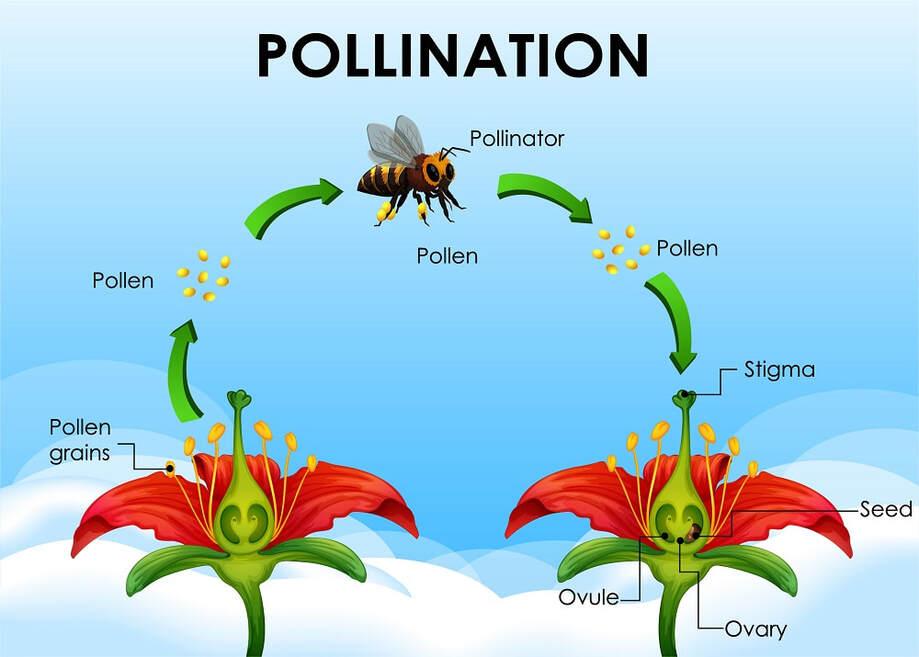
Source Image: neprimateconservancy.org
Self-Pollination vs. Cross-Pollination
In the realm of plant reproduction, two main strategies exist: self-pollination and cross-pollination. Each strategy has its own advantages and disadvantages, influencing the reproductive success and genetic diversity of plant populations. In this section, we’ll explore the differences between self-pollination and cross-pollination and discuss how plants regulate pollination to ensure reproductive success.
| Strategy | Description |
|---|---|
| Self-Pollination | Self-pollination occurs when pollen from the anther of a flower fertilizes the stigma of the same flower or another flower on the same plant. This reproductive strategy promotes genetic uniformity and reproductive assurance but may limit genetic diversity and adaptability in offspring. |
| Cross-Pollination | Cross-pollination involves the transfer of pollen from the anther of one flower to the stigma of another flower on a different plant of the same species. This reproductive strategy promotes genetic diversity and adaptability but requires external agents, such as pollinators or wind, for pollen transfer. |
Self-Pollination
Self-pollination is a reproductive strategy in which pollen from the anther of a flower fertilizes the stigma of the same flower or another flower on the same plant. This process can occur through various mechanisms, including gravity, wind, or floral structures that facilitate pollen transfer within the same plant. Self-pollination ensures reproductive assurance, as it does not rely on external agents for pollen transfer. However, it may result in genetic uniformity and limit the adaptability of offspring to changing environmental conditions.
Cross-Pollination
Cross-pollination is a reproductive strategy in which pollen from the anther of one flower fertilizes the stigma of another flower on a different plant of the same species. This process typically requires external agents, such as pollinators (e.g., bees, butterflies, birds) or wind, to transfer pollen between flowers. Cross-pollination promotes genetic diversity and adaptability by introducing new genetic combinations through the mixing of gametes from different individuals. However, it also relies on the availability and effectiveness of pollinators, making it less predictable than self-pollination.
Regulation of Pollination
Plants have evolved various mechanisms to regulate pollination and optimize reproductive success. These mechanisms may include temporal or spatial separation of male and female reproductive organs, self-incompatibility systems that prevent self-fertilization, or floral traits that attract specific pollinators while deterring others. By regulating pollination, plants can control the timing, frequency, and efficiency of pollen transfer, ensuring the production of viable seeds and offspring.
Pollination Assurance
In environments where pollinator activity is limited or unreliable, self-pollination provides reproductive assurance by ensuring fertilization and seed production without external assistance. Many self-pollinating plants have evolved mechanisms to promote self-fertilization, such as self-compatible flowers that allow pollen to fertilize ovules within the same flower or automatic self-pollination triggered by floral movements or vibrations.
Genetic Diversity
Cross-pollination promotes genetic diversity and adaptability by facilitating the exchange of genetic material between different individuals within a plant population. This genetic diversity increases the likelihood of producing offspring with novel traits and enhances the population’s ability to respond to environmental changes, such as climate variability, pathogens, or predation pressure. Additionally, cross-pollination reduces the risk of inbreeding depression and genetic disorders associated with prolonged self-pollination.
Reproductive Strategies
Plants may employ different reproductive strategies depending on their ecological niche, breeding system, and environmental conditions. While self-pollination offers reproductive assurance and genetic uniformity, cross-pollination promotes genetic diversity and adaptability. Some plant species exhibit mixed mating systems, combining elements of both self-pollination and cross-pollination to maximize reproductive success in variable or unpredictable environments.
Human Impact
Human activities, such as habitat fragmentation, introduction of invasive species, and climate change, can disrupt natural pollination processes and alter plant reproductive strategies. Conservation efforts to protect pollinator populations, restore habitat connectivity, and mitigate anthropogenic disturbances are essential for maintaining plant reproductive diversity and ecosystem resilience in the face of environmental challenges.
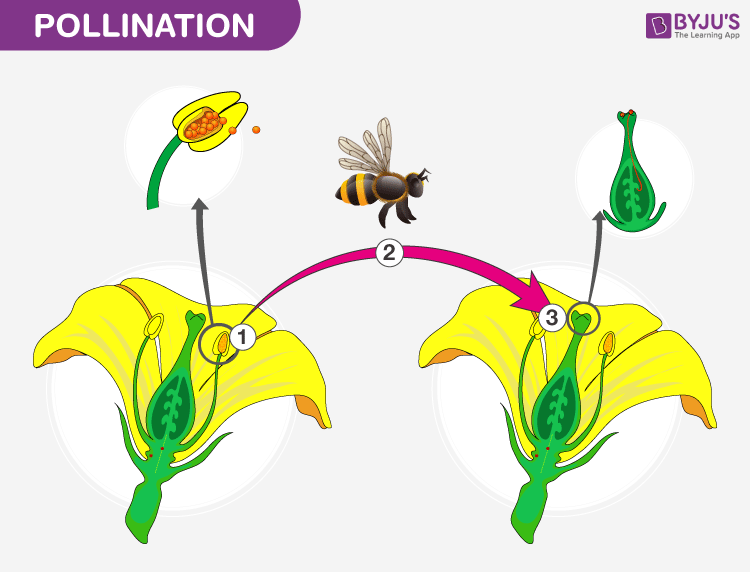
Source Image: byjus.com
Pollen Transfer
Pollen Transfer Efficiency
The efficiency of pollen transfer plays a crucial role in determining reproductive success and genetic diversity within plant populations. Various factors influence the effectiveness of pollen transfer, including distance between plants, weather conditions, and the behavior of pollinators. Understanding and optimizing these factors are essential for maximizing pollination rates and ensuring the long-term viability of plant populations.
| Factor | Influence |
|---|---|
| Distance | The distance between pollen donor and recipient plants affects the likelihood of successful pollination. Plants located closer together may experience higher rates of pollen transfer due to reduced dispersal distances and increased opportunities for pollen encounters. |
| Weather | Weather conditions, such as temperature, humidity, wind speed, and precipitation, can impact pollen dispersal and pollinator activity. For example, windy conditions may enhance pollen transport, while rain or extreme temperatures may inhibit pollination and fertilization processes. |
| Pollinator Behavior | The behavior of pollinators, such as foraging preferences, movement patterns, and time spent on flowers, influences the efficiency of pollen transfer between plants. Some pollinators may be more effective at carrying pollen over long distances, while others may specialize in specific flower types or visitation strategies. |
Distance
The distance between pollen donor and recipient plants is a critical factor influencing pollen transfer efficiency. In plant populations with low spatial connectivity, such as fragmented habitats or isolated individuals, pollen dispersal may be limited, leading to reduced genetic diversity and increased risks of inbreeding depression. Increasing habitat connectivity, establishing pollinator corridors, or introducing pollinator-attractant plants can help enhance pollen transfer and gene flow within populations.
Weather
Weather conditions play a significant role in shaping pollen dispersal patterns and pollinator behavior. For example, windy conditions can facilitate long-distance pollen transport, particularly in wind-pollinated plants, while calm conditions may limit pollen dispersal and restrict pollinator movements. Extreme weather events, such as storms or droughts, can disrupt pollination processes and reduce reproductive success in affected plant populations.
Pollinator Behavior
The behavior of pollinators, including bees, butterflies, birds, and bats, influences the efficiency of pollen transfer between flowers. Some pollinators exhibit specialized foraging behaviors or floral preferences, which may affect their effectiveness as pollen carriers. For example, bees are known for their efficient pollen collection and transfer capabilities, while butterflies may be less effective due to their erratic flight patterns and limited pollen-carrying capacity. Understanding pollinator behavior and preferences can help identify key pollinators and optimize habitat management practices to support their populations.
Enhancing Pollination Rates
To enhance pollination rates in agricultural settings or conservation efforts, various strategies can be implemented to optimize pollen transfer efficiency. These strategies may include:
- Habitat Restoration: Restoring native vegetation and creating pollinator-friendly habitats can attract diverse pollinator species and promote natural pollination processes.
- Pollinator Conservation: Implementing measures to protect and conserve pollinator populations, such as reducing pesticide use, providing nesting sites, and planting pollinator-friendly plants, can support healthy pollinator communities and enhance pollination services.
- Managed Pollination: In agricultural settings, managed pollination techniques, such as hive rentals for honeybee pollination or hand pollination of crops, can supplement natural pollination services and ensure consistent yields.
- Genetic Diversity: Maintaining genetic diversity within plant populations through habitat connectivity, seed exchange programs, or selective breeding can enhance reproductive success and resilience to environmental stressors.
By implementing these strategies and understanding the factors influencing pollen transfer efficiency, practitioners can enhance pollination rates, promote plant reproduction, and support biodiversity conservation efforts.
Pollen-Vector Interactions
Pollen-Vector interactions refer to the complex relationships between plants and their pollinators, encompassing a wide range of mutualistic interactions that shape pollination dynamics and reproductive success. From floral traits and rewards to pollinator behaviors and preferences, these interactions play a crucial role in determining the effectiveness of pollen transfer and ensuring the reproductive fitness of both plants and pollinators.
| Interaction | Description |
|---|---|
| Floral Traits | Plants exhibit a diverse array of floral traits that attract specific pollinators and facilitate pollen transfer. These traits may include flower color, shape, size, scent, nectar production, and pollen presentation, which vary depending on the plant species and its pollinator guild. |
| Pollinator Rewards | Pollinators receive rewards from plants in exchange for pollen transfer, including nectar, pollen, oils, or shelter. These rewards serve as incentives for pollinator visitation and increase the likelihood of successful pollination. Different pollinators may prefer specific rewards based on their nutritional needs and foraging behaviors. |
| Pollinator Behaviors | Pollinator behaviors, such as foraging preferences, movement patterns, and efficiency in pollen collection, influence the effectiveness of pollen transfer between flowers. Some pollinators may exhibit specialized behaviors, such as buzz pollination by bees or long-tongued feeding by butterflies, which optimize pollen collection and deposition. |
Floral Traits and Rewards
Plants have evolved diverse floral traits and rewards to attract specific pollinators and ensure effective pollen transfer. These traits may include flower color, shape, size, scent, and nectar production, which vary depending on the plant species and its co-evolved pollinator. For example, flowers pollinated by bees often have blue or yellow hues, as bees are attracted to these colors, while flowers pollinated by nocturnal moths may emit strong, sweet fragrances to attract their nocturnal visitors.
Pollinator Behaviors
The behaviors of pollinators play a crucial role in determining the efficiency of pollen transfer between flowers. Different pollinators exhibit unique foraging strategies and movement patterns tailored to their specific ecological niches and floral resources. For instance, bees are known for their efficient pollen collection through buzz pollination, wherein they vibrate their flight muscles to release pollen from poricidal anthers. Butterflies, on the other hand, utilize their long proboscis to access nectar deep within floral tubes, inadvertently transferring pollen in the process. Understanding pollinator behaviors allows us to predict their interactions with flowers and design conservation strategies to support their populations.
Mutualistic Relationships
Pollen-vector interactions are characterized by mutualistic relationships wherein both plants and pollinators benefit from their interactions. Plants rely on pollinators for pollen transfer, fertilization, and seed production, while pollinators depend on plants for essential resources such as nectar, pollen, and habitat. These mutualistic relationships have co-evolved over millions of years, leading to specialized adaptations in both plants and pollinators that enhance the efficiency of pollen transfer and ensure reproductive success. By fostering mutualistic relationships through habitat conservation, biodiversity enhancement, and sustainable land management practices, we can support healthy pollinator populations and maintain ecosystem stability.
Pollinator Decline and Conservation
Pollinators play a vital role in ecosystem functioning, agricultural productivity, and biodiversity maintenance. However, pollinator populations worldwide are facing significant threats from habitat loss, pesticide use, climate change, and disease. The decline of pollinators poses serious risks to global food security, natural ecosystems, and human well-being. In this section, we’ll explore the causes of pollinator decline and discuss conservation efforts aimed at protecting pollinator populations and their essential ecosystem services.
| Threat | Description |
|---|---|
| Habitat Loss | The loss, fragmentation, and degradation of natural habitats, such as meadows, forests, and wetlands, due to urbanization, agricultural expansion, and infrastructure development, reduce available foraging and nesting sites for pollinators, leading to population declines and local extinctions. |
| Pesticide Use | The widespread use of pesticides, including insecticides, herbicides, and fungicides, in agricultural and urban landscapes poses direct threats to pollinators through toxic exposure, lethal effects, sublethal impacts on behavior and reproduction, and contamination of food resources, such as nectar and pollen. |
| Climate Change | Climate change alters temperature and precipitation patterns, phenological synchrony between flowering plants and their pollinators, and the distribution and abundance of floral resources, leading to mismatches in plant-pollinator interactions, disruptions in foraging behaviors, and shifts in pollinator populations. |
| Disease | Pollinators are susceptible to various diseases, parasites, and pathogens, including viruses, bacteria, fungi, and mites, which can weaken immune systems, reduce reproductive fitness, and cause colony collapse in social insects such as bees. Globalization and trade facilitate the spread of pollinator diseases across regions and continents. |
Habitat Loss and Degradation
Habitat loss and degradation are among the primary drivers of pollinator decline worldwide. The conversion of natural habitats into agricultural land, urban areas, and industrial zones reduces available foraging and nesting resources for pollinators, leading to population declines and habitat fragmentation. Restoring and conserving pollinator habitats through land-use planning, habitat restoration projects, and protected area networks are essential for maintaining healthy pollinator populations and ecosystem functioning.
Pesticide Exposure
Pesticides, including insecticides, herbicides, and fungicides, pose significant threats to pollinators through direct toxicity, sublethal effects, and contamination of food resources. Neonicotinoids, in particular, have been linked to declines in bee populations due to their neurotoxic effects on foraging behavior, navigation, and immune function. Integrated pest management strategies, pesticide alternatives, and regulatory measures are needed to minimize pesticide risks to pollinators and promote sustainable agriculture practices.
Climate Change Impacts
Climate change exacerbates existing threats to pollinators by altering temperature and precipitation patterns, phenological synchrony between plants and pollinators, and the distribution of floral resources. Shifts in flowering phenology and the availability of nectar and pollen can disrupt plant-pollinator interactions, leading to mismatches in foraging behaviors and reduced reproductive success. Mitigating climate change through greenhouse gas emissions reduction, habitat restoration, and adaptive management strategies is essential for preserving pollinator biodiversity and ecosystem resilience.
Disease and Parasites
Pollinators face increasing risks from diseases, parasites, and pathogens, which can weaken immune systems, reduce reproductive fitness, and cause population declines. Diseases such as colony collapse disorder (CCD) in honeybees and white-nose syndrome in bats have devastated pollinator populations, highlighting the urgent need for disease surveillance, research, and management interventions. Biosecurity measures, habitat restoration, and genetic diversity conservation can help strengthen pollinator resilience to disease outbreaks and environmental stressors.
Conservation Efforts
Conserving pollinator populations and their essential ecosystem services requires collaborative efforts across multiple sectors, including government agencies, research institutions, non-governmental organizations, and local communities. Key conservation strategies include:
- Habitat Restoration: Restoring and conserving pollinator habitats through land-use planning, habitat restoration projects, and protected area networks to provide foraging and nesting resources for pollinators.
- Pesticide Management: Implementing integrated pest management (IPM) strategies, reducing pesticide use, promoting organic farming practices, and banning or restricting the use of harmful pesticides to minimize risks to pollinators.
- Climate Change Adaptation: Mitigating climate change impacts on pollinators through greenhouse gas emissions reduction, habitat restoration, and adaptive management strategies to maintain suitable habitat conditions and floral resources.
- Disease Surveillance: Monitoring pollinator health, disease prevalence, and population trends through citizen science initiatives, research programs, and collaborative monitoring networks to detect and respond to emerging threats.
- Public Education and Outreach: Raising awareness about the importance of pollinators, their threats, and conservation needs through educational campaigns, outreach events, and community engagement to mobilize public support for pollinator conservation efforts.
By implementing these conservation strategies and fostering partnerships between stakeholders, we can protect pollinator populations, safeguard ecosystem services, and ensure the sustainable future of agriculture and biodiversity.

Source Image: www.slideserve.com

